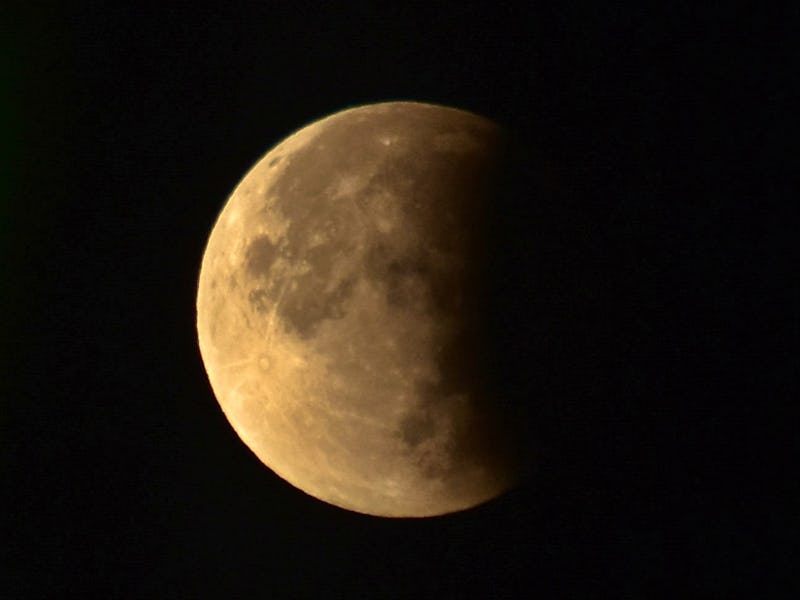The Final Lunar Eclipse of 2019 Showed an Orange-Hued Full Moon in the South
The partial lunar eclipse took place during the "Thunder Moon."

Tuesday’s partial lunar eclipse, the last lunar eclipse of 2019, was visible from Australia, Africa, South America, most of Europe, and Asia. It missed North America, except for the very southern and eastern parts of the continent.
The full moon passed partway through the southern part of the Earth’s shadow resulting in a partial lunar eclipse. In the US on Tuesday night, the first full moon of summer illuminated the sky. Sometimes called the “Thunder Moon,” the July moon received the name because of the thunder storms that are typical in early summer.
Areas with lighter shadings left of the center will experience the eclipse after moonrise/sunset. Areas with lighter shadings right of the center won't experience the eclipse until moonset/sunrise. CREDIT timeanddate.com
As the animation above shows, the moon entered penumbra (the weaker part of Earth’s shadow) at 18:43 Coordinated Universal Time (UTC) on Tuesday – that’s 2:43 p.m. Eastern – and then umbra (the darker part of Earth’s shadow) at 20:01 UTC (4:01 p.m. Eastern). The peak of the eclipse arrived at at 21:30 (5:30 p.m. Eastern).
Tuesday’s event was a partial lunar eclipse. A full lunar eclipse took place in January 21. The next lunar eclipse, a partial eclipse, will be on January 10, 2020.
The next lunar eclipse that will be visible in the United States is scheduled for July 4, 2020. The full moon that night will turn darker than a regular full moon.
Photographers all around the world, from Sydney, Australia to Southampton, in the south of England, snapped stunning pics as almost everywhere was lucky enough to have clear skies.
The partial lunar eclipse coincided with the 50th anniversary of the Apollo 11 moon landing. The next partial lunar eclipse will be a penumbral eclipse on January 10–11, 2020 and will seen in much the same part of the world that this one was.
In many locations around the world, the moon appeared red during the eclipse, making the celestial event that much more breathtaking.
And while Australia, Africa, South America, Asia and Europe was enjoying the partial lunar eclipse, the cosmic configuration of things meant that New York, and the eastern seaboard of the USA was enjoying a stunning full moon.
This full moon was known by early Native American tribes as the Buck Moon because the male buck deer would begin to grow their new antlers at this time of year. This moon has also been known as the Full Thunder Moon and the Full Hay Moon. In the past, it was common to think that many forms of mental illness were caused by the moon, hence the term lunatic.
The full moon over downtown Manhattan last night CREDIT: AP-PTI